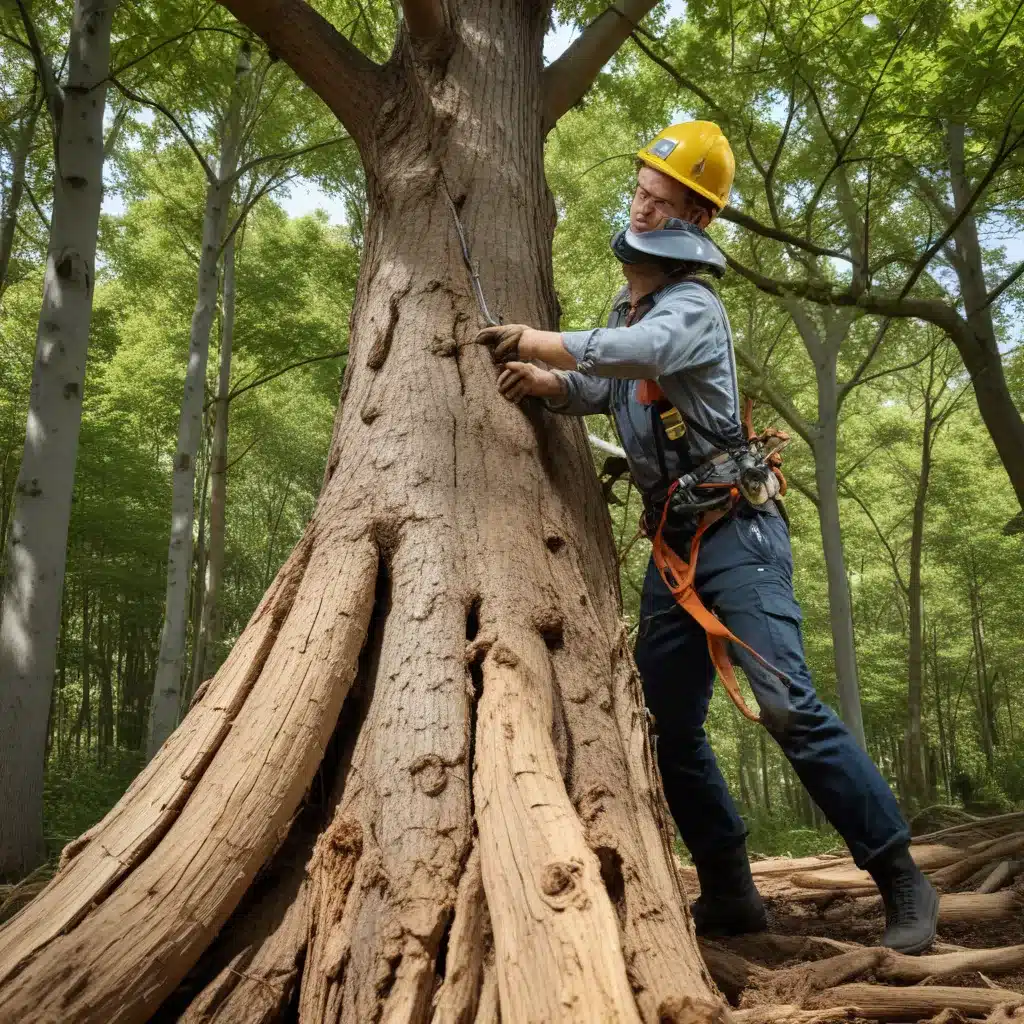
As the world transitions towards a sustainable energy future, the role of trees and the process of tree removal have become increasingly critical considerations. At the intersection of renewable energy development and environmental preservation, TriCounty Tree Care offers deep insights to navigate this complex landscape.
Renewable Energy Considerations
Sustainable Energy Transition
The shift towards renewable energy sources, such as solar and wind power, is a vital component of the global effort to mitigate climate change. However, the deployment of renewable energy infrastructure can sometimes come at the expense of natural ecosystems, particularly forested areas. A recent Harvard study has highlighted the concerning trend of clearing carbon-absorbing forests to make way for solar panel installations, inadvertently undermining environmental progress.
Environmental Impact Assessment
Before undertaking any tree removal or land clearing for renewable energy projects, it is essential to conduct a thorough environmental impact assessment. This process evaluates the potential consequences on the local ecosystem, including the impact on wildlife habitats, biodiversity, and the overall carbon sequestration capacity of the affected area. By carefully weighing the trade-offs, policymakers and developers can make informed decisions that balance the need for renewable energy with the preservation of natural resources.
Renewable Energy Infrastructure
The integration of renewable energy infrastructure, such as solar farms and wind turbines, must be carefully planned to minimize the disruption to existing tree cover. Strategies like prioritizing the use of already-developed land, rooftops, and parking lots can help reduce the encroachment on forested areas. Additionally, incorporating green infrastructure solutions, such as living walls, green roofs, and strategically placed trees, can help mitigate the environmental impact of renewable energy projects.
Tree Removal Practices
Deforestation and Land Clearing
While the expansion of renewable energy is crucial, the indiscriminate clearing of forests can have severe ecological consequences. Deforestation not only destroys valuable habitats and biodiversity but also diminishes the ability of natural carbon sinks to sequester greenhouse gases. TriCounty Tree Care advocates for a more nuanced approach that prioritizes the preservation of mature, carbon-rich forests and strategically targets areas with lower ecological significance for land clearing.
Tree Removal Techniques
When tree removal is necessary for renewable energy projects, TriCounty Tree Care recommends employing best management practices to minimize the impact on the surrounding environment. This includes the selective removal of trees, the preservation of understory vegetation, and the implementation of erosion control measures to prevent soil degradation. Additionally, the utilization of low-impact tree removal methods, such as hand-felling or the use of lightweight equipment, can help reduce the overall disturbance to the site.
Ecological Restoration
In cases where tree removal is unavoidable, TriCounty Tree Care emphasizes the importance of ecological restoration efforts. This may involve the reforestation of cleared areas, the introduction of native plant species, and the creation of wildlife corridors to maintain ecosystem connectivity. By prioritizing the restoration of the natural landscape, renewable energy projects can mitigate their environmental impact and contribute to the overall resilience of the local ecosystem.
Sustainable Solutions for Energy and Environment
Integrated Land Management
To achieve a harmonious balance between renewable energy development and environmental protection, TriCounty Tree Care advocates for an integrated land management approach. This holistic strategy considers the diverse needs of the landscape, including the preservation of carbon-rich forests, the strategic placement of renewable energy infrastructure, and the restoration of degraded areas. By adopting a collaborative, multi-stakeholder approach, policymakers and developers can find sustainable solutions that address both energy and environmental concerns.
Renewable Energy Integration
TriCounty Tree Care emphasizes the importance of thoughtfully integrating renewable energy solutions into the existing landscape. This may involve the use of agrivoltaic systems, where solar panels are strategically placed to coexist with agricultural activities, or the integration of urban forestry practices, where trees and renewable energy infrastructure are designed to complement each other. By embracing innovative approaches, renewable energy projects can contribute to the overall sustainability of the built environment.
Balancing Environmental and Energy Needs
The challenge of balancing environmental and energy needs is complex, but TriCounty Tree Care is committed to working with policymakers, developers, and community stakeholders to find sustainable solutions. This may involve the development of renewable energy zoning policies that prioritize the use of already-disturbed land, the implementation of carbon offset programs to compensate for unavoidable tree removal, and the fostering of public-private partnerships to align economic and environmental interests.
Policy and Regulations
Renewable Energy Policies
As governments and policymakers strive to meet ambitious renewable energy targets, it is crucial that they consider the environmental implications of these efforts. TriCounty Tree Care advocates for the development of renewable energy policies that incorporate robust environmental impact assessments, incentivize the use of existing infrastructure and non-forested areas, and promote the integration of green infrastructure solutions.
Environmental Protection Guidelines
In parallel with renewable energy policies, TriCounty Tree Care supports the strengthening of environmental protection guidelines that safeguard the integrity of natural ecosystems. This may include the establishment of no-deforestation zones, the implementation of biodiversity offset programs, and the enforcement of rigorous reforestation requirements for any unavoidable tree removal.
Sustainable Development Frameworks
To truly achieve a sustainable future, TriCounty Tree Care recommends the adoption of holistic sustainable development frameworks that harmonize the goals of renewable energy, environmental protection, and social equity. By aligning policy, regulation, and community engagement, these frameworks can guide the strategic placement of renewable energy infrastructure, the preservation of natural resources, and the equitable distribution of the benefits and burdens associated with the energy transition.
As the world navigates the complex interplay between renewable energy development and environmental stewardship, TriCounty Tree Care is committed to providing expert guidance and innovative solutions. By prioritizing sustainable land management, integrated renewable energy integration, and comprehensive policy frameworks, we can clear the path for a future that balances our energy needs with the preservation of our natural ecosystems. Visit TriCounty Tree Care to learn more about our comprehensive services and our dedication to a sustainable tomorrow.


